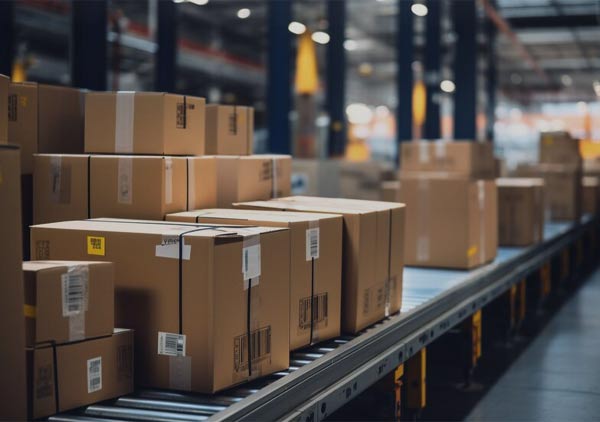
China Wholesalers – 5 Important Facts to Know
China beats most countries on cost, talent pool, and workforce maturity as a complete supply chain solution. Several reasons make China wholesale a good business move. However, the fidelities of partnering with Chinese factories should motivate you to start with the right steps.
#1 Negotiate the price correctly
Amazon sellers charge 7x-8x what it costs to source their products from China. If you’ve figured out your margins, haggling too much on price could hurt you:
- It’s important to be reasonable with your supplier because ideally you’ll stay in business as long as they do. Every Amazon seller squeezing manufacturers’ profits would risk their own business if they tried to beat the price.
- Quotes aren’t always what you pay. Due to fluctuations in raw material prices, higher taxes, and other cost variables, suppliers do put time limits on their prices. It’s a common reason why prices change for the same product. Understanding these nuances and accepting that variations do affect what you’re willing to pay. It could pay off as your supplier may be more inclined to return the favor if their manufacturing cost goes up.
- Manufacturers look at your Amazon business to see how it’s doing. If your first order sold quickly, they’ll know if you’re making a lot of money. You can probably count on the price they quote or subsequent orders not going up if you treat your supplier right the first time. If they do, it could eat into your profit margin. This is true for any supplier, not just China.
Negotiations with Chinese suppliers
How do you negotiate? What can you negotiate? On large orders, you can negotiate a fair price and a long-term commitment. When you’re happy with the product quality and want to buy more than the MOQ, you should ask for concessions. If you raise prices by $0.10, it won’t hurt your profits. Yet, if you raise them by $0.68 in Chinese currency, it will make a difference.
You might get a high quote from a manufacturer who specializes in your products. Do you know enough about the market to know you can get better quotes elsewhere? You’ll be able to negotiate a competitive rate or possibly a better rate for a larger order if you do your research.
It’s all about having conversations that include facts and figures, because they’re undeniable. Something like, “Mrs. Abby, I have another quote from a factory not very far from yours.” “Mrs. Verity has quoted $5/piece which is roughly 40% below your price,” should benefit you greatly during a negotiation.”
Margin varies by industry. If you’re sourcing from a metal stamping manufacturer, you can’t expect a similar quote from someone who makes ABS conduit boxes or toys. It’s more important to do your research and rely on the numbers than to play hard. Negotiating should be easier if you compare apples to apples.
As long as the terms and conditions are reasonable and don’t affect their manufacturing process, suppliers are willing to negotiate. For instance, if a part of the product you’re sourcing falls off or gets damaged easily – such as a gasket – specify 150 spares per order. In this case, a deal that doesn’t hurt the supplier’s position will get them to make allowances.
#2 Know what you’ll receive when you order a sample
The sample proves the manufacturer’s capabilities. To find out which factory is the most suitable for quality and price, order samples from all the shortlisted manufacturers. When ordering, these tips will help.
- Want to sell a variation on Amazon? You can get a sample with all the specs you need, including color, size, logo, etc. However, custom samples usually take a while. If you want a sample within 3-7 business days, you should consider ordering one from what the supplier already has in stock. In addition, you should let them know what you’re looking for so they can send you something similar.
- You might be able to order a free sample and pay for shipping. Each sample will have to be shipped separately and you’ll have to pay $30-$60 in shipping costs per sample. Freight forwarders bundle all samples and ship them in one box.
- There’s one off-the-shelf sample without customization. As discussed above, you can order a custom factory sample or a production sample. If you want to make sure the product material is high quality, ask the manufacturer to send you a sample of the desired material. This will enable you to check for hardness.
- Based on the type of product, you can also review a random sample after mass production starts. Products can be whole products or parts of them. To check the sample, you need an on-site quality inspector. If you can visit China, you can review the product yourself.
Also, you can compare prices between manufacturers with a sample. The sample lets you test the product to see if it’s worth the price. Although two manufacturers may have used the same material to make the product, their prices might differ even though they used the same material. This will show which suppliers to filter out.
#3 Importers are responsible for product compliance
As an Amazon seller, clients are responsible for patents, trademarks, and product safety. Based on the product they’re selling in the United States or EU, customers need to check for patent issues, research safety hazards, and make sure all meet the required intellectual property laws.
- Amazon’s Terms of Service (TOS) prohibit certain seller activities. This is general guidance, and Amazon does not help if any product fails to meet safety standards. If you’re selling a generic or commonly used product, you have nothing to worry about. Pre-approval is required for some products. Third-parties can help you navigate Amazon’s compliance process if the product is subject to state, national, or international regulations.
- Standards requirements and compliance processes vary by product category and market. Among them are lab tests, safety and chemical standards, labeling requirements, and a declaration of conformity. The standards aren’t set by Amazon, but it expects some evidence of compliance. Your supplier can accommodate these requirements during pre-production.
- Suppliers may have some compliance data, but it may not be current or comply with Amazon’s requirements. The responsibility is on you to look up Amazon’s documentation standards and gather information proactively, so you can send the records as soon as Amazon asks.
#4 Be part of the quality control process
Partnering with the right factory is the key to sourcing from China. Buyers should feel confident to get what they pay for. To avoid disappointment, clients should make sure they know the followings:
- Make sure the supplier has clear specs, drawings, and other product requirements.
- Make sure they understand your specs. Get your message across with tact and the right words. Mandarin speaking skills are a plus.
- There shouldn’t be any broken or non-compliant products leaving the factory. Before products are shipped to your location, quality control needs to happen at the factory. The factory should check for visuals like color, shape, appearance, dimensions, certifications, and function, and explain how those checks were done.
There are three quality issues that pop up:
- The mass-produced goods don’t match the sample.
- The quality varies from batch to batch.
- You don’t know who to contact about quality
Quality control can be improved by adding more steps. The raw material can be inspected and processes can be controlled at different stages of production by a representative. This service can be provided by sourcing agents, who keep factories on their toes and watch quality for you.
On your factory visit, you might be impressed by the ISO quality system. Still, unforeseen circumstances or price pressures can mess with quality and delivery. By having a physical presence in China, understanding the local language and culture, anticipating production downtime, and supervising production, a China sourcing agent can prevent quality issues and delays.
The third problem – not knowing who to talk to – can be solved by specifying at the beginning that a point-person be assigned to negotiate manufacturing requirements. They should be able to understand your specs and have the authority to raise these issues with factory staff.
Chinese suppliers align products to market expectations
Chinese factories can’t be held to the same standards as western factories. Due to its history of poverty and isolation, the Chinese may not understand how Westerners take quality for granted. The best place to get low-cost, high-quality products is Chinese factories. However, if you’re looking for a product that stands out in its category, be prepared to describe your expectations.
Rather than using subjective terms like ‘top quality’, specify the type of raw material or how it should hold up in a stress test. There may be some back and forth even after you get the sample, but a sourcing agent with experience on the ground and Mandarin fluency can make sure the supplier has all the details they need to make your product exactly to your specifications by stating your requirements clearly.
#5 Know the pros and cons of different payment methods
There’s a lot of flexibility when it comes to choosing payment methods. If you’ve partnered with a Alibaba supplier, you get Trade Assurance. Indeed, this minimizes your risk by guaranteeing your money back if they don’t meet the order contract. This includes delivery delays, quality and quantity discrepancies, and other problems. If you don’t get your products on time, you’re eligible for a refund. Trade Assurance isn’t accepted by all suppliers.
Chinese suppliers are open to credit card payments. In most cases, credit card companies will refund your money if the supplier doesn’t ship your order or if the quality isn’t up to par. It will take the credit card company 2-3 months to investigate the dispute and refund your money if you file a dispute within 60 days of making the payment. They may try to pass on the processing fees to you, which are about 3%.
PayPal is a popular way to pay Chinese suppliers, but some are wary of buyer chargebacks. You have to factor in the second currency exchange fee – up to 7%.
Western Union is another way to pay suppliers, but don’t make a big or full payment through this method. If your supplier sends you defective products, there’s no recourse to get your money back.
In any case, there is no requirement to pay suppliers upfront. If you wish to use Western Union, send an amount you’re willing to lose. Regardless of the payment method, you must insist on staggered payments, paying the final tranche once the order has been received.
AROOM GLOBAL is an expert China sourcing agency that has helped customers manufacture and source products from the world’s factory. Contact us at info@aroomglobal.com or visit our website to learn more about China sourcing and manufacturing services.






